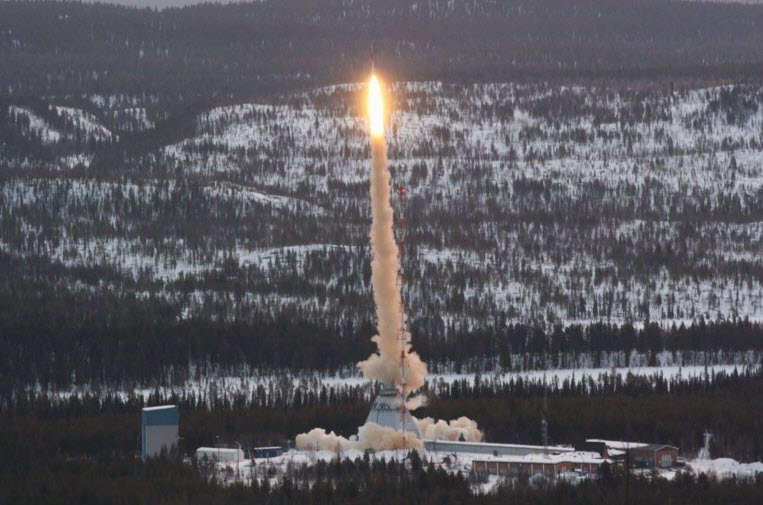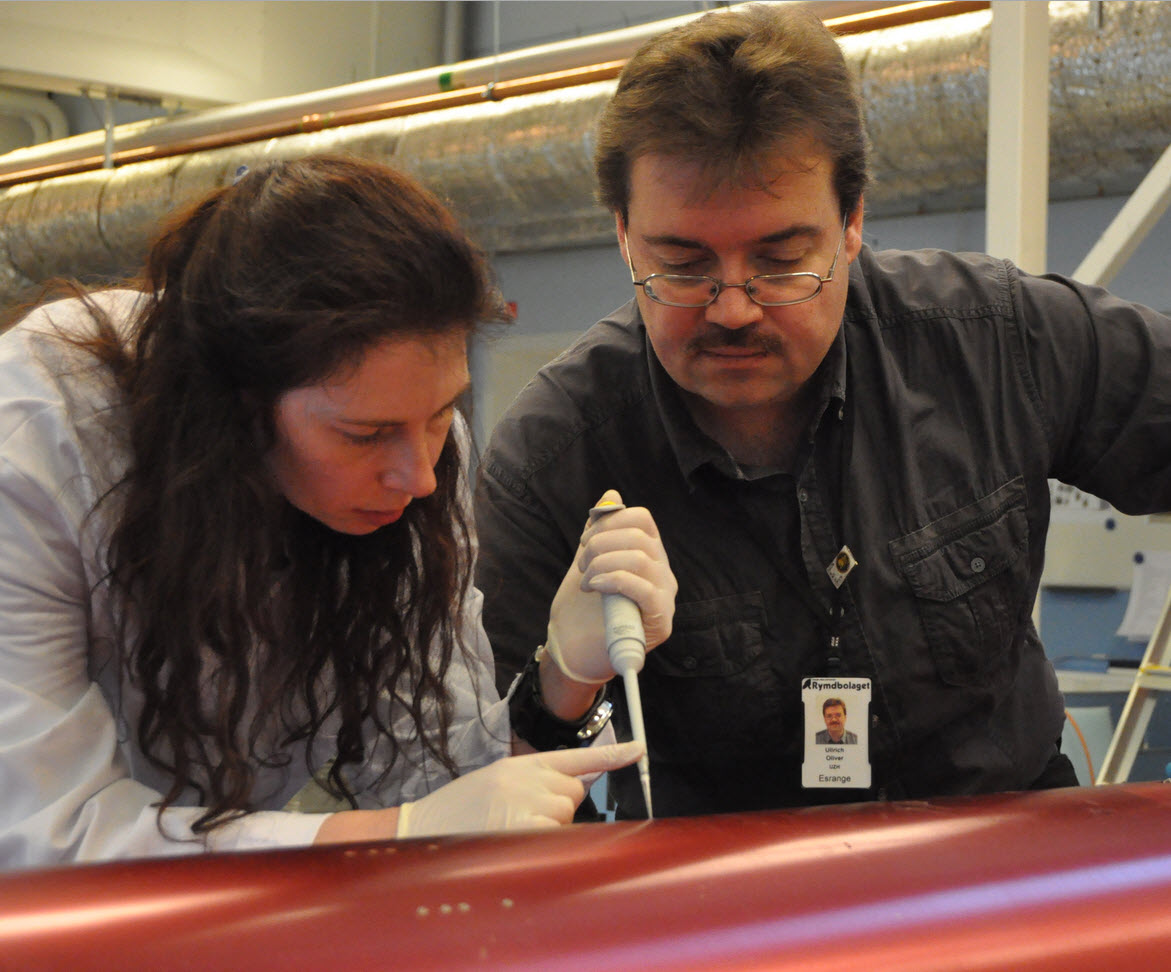DNA survives rocket return from space
November 28, 2014

Launch of the TEXUS-49 rocket from the Esrange Space Center in Sweden (credit: Adrian Mettauer)
DNA can survive a flight through space and re-entry into the earth’s atmosphere and still pass on genetic information, scientists from the University of Zurich (UZH) found during a March 2011 experiment on the TEXUS-49 research rocket, the researchers reported in the journal PLOS ONE (open access) Thursday (Nov. 26, 2014).
The researchers applied plasmid DNA molecules to the outer shell of the payload section of a rocket using pipettes. Surviving space flight, 1000°C temperatures, re-entry into Earth’s atmosphere, and landing, about half of the DNA molecules were still found on all the application points on the rocket.
In addition, up to 35% of the DNA retained its full biological function (mediating antibiotic resistance in bacteria and fluorescent marker expression in cells). DNA salvaged was even still able to transfer genetic information to bacterial and connective tissue cells.
“This study provides experimental evidence that the DNA’s genetic information is essentially capable of surviving the extreme conditions of space and the re-entry into Earth’s dense atmosphere,” says study head Professor Oliver Ullrich from the UZH Institute of Anatomy.

Medical researcher Cora Thiel and Prof. Oliver Ullrich recover DNA molecules from the outer shell of the payload section of the TEXUS rocket (credit: Adrian Mettauer)
The additional experiment was intended to answer the question: “could the outer structure of the rocket be suitable for stability tests on biosignatures — molecules that can prove the existence of past or present extraterrestrial life,” explains Cora S. Thiel of the UZH Institute of Anatomy, Faculty of Medicine.
The researchers say the study reveals that genetic information from the DNA can essentially withstand the most extreme conditions, supporting the speculation that DNA could reach us from outer space in extraterrestrial material made of dust and meteorites, for instance, around 100 tons of which hits our planet every day.
They also suggest that sounding rocket flights can be used to model the high-speed atmospheric entry of organics-laden artificial meteorites.
“The results show that it is by no means unlikely that, despite all the safety precautions, space ships could also carry terrestrial DNA to their landing site. We need to have this under control in the search for extraterrestrial life,” such as NASA’s 2021 Icebreaker Life mission to Mars to search for biomolecular evidence for life, says Ullrich.
Abstract of Functional Activity of Plasmid DNA after Entry into the Atmosphere of Earth Investigated by a New Biomarker Stability Assay for Ballistic Spaceflight Experiments
Sounding rockets represent an excellent platform for testing the influence of space conditions during the passage of Earth’s atmosphere and re-entry on biological, physical and chemical experiments for astrobiological purposes. We designed a robust functionality biomarker assay to analyze the biological effects of suborbital spaceflights prevailing during ballistic rocket flights. During the TEXUS-49 rocket mission in March 2011, artificial plasmid DNA carrying a fluorescent marker (enhanced green fluorescent protein: EGFP) and an antibiotic resistance cassette (kanamycin/neomycin) was attached on different positions of rocket exterior; (i) circular every 90 degree on the outer surface concentrical of the payload, (ii) in the grooves of screw heads located in between the surface application sites, and (iii) on the surface of the bottom side of the payload. Temperature measurements showed two major peaks at 118 and 130°C during the 780 seconds lasting flight on the inside of the recovery module, while outer gas temperatures of more than 1000°C were estimated on the sample application locations. Directly after retrieval and return transport of the payload, the plasmid DNA samples were recovered. Subsequent analyses showed that DNA could be recovered from all application sites with a maximum of 53% in the grooves of the screw heads. We could further show that up to 35% of DNA retained its full biological function, i.e., mediating antibiotic resistance in bacteria and fluorescent marker expression in eukariotic cells. These experiments show that our plasmid DNA biomarker assay is suitable to characterize the environmental conditions affecting DNA during an atmospheric transit and the re-entry and constitute the first report of the stability of DNA during hypervelocity atmospheric transit indicating that sounding rocket flights can be used to model the high-speed atmospheric entry of organics-laden artificial meteorites.